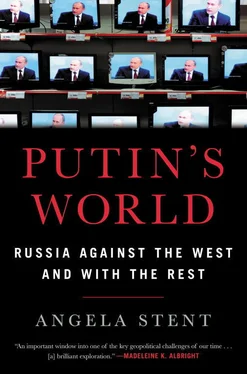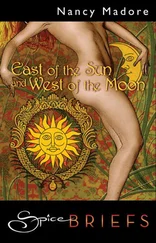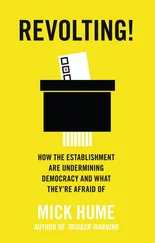But he came with a message of conciliation. Yeltsin went further than Gorbachev to acknowledge the cruel treatment of Japanese POWs after 1945. “On behalf of the Russian people and the government, I would like to express my apology for these inhuman acts,” he told Prime Minister Morihiro Hosakawa, blaming the “totalitarian regime” for these acts. He offered “deep condolences” to the emperor. Hosakawa praised Yeltsin’s words as the “foundation for the spiritual and psychological reconciliation of our two peoples.” Moreover, Yeltsin went on record as admitting the existence of a territorial dispute and again promised to withdraw the remaining Russian troops from the islands. But, to the consternation of his hosts, he would not acknowledge Japanese sovereignty over the islands. 29
Despite Japan’s disappointment over the meager results of this summit, four years later Prime Minister Ryutaro Hashimoto launched a new initiative. Determined to improve ties with Russia, he made a major speech in 1997 to a business audience in which he acknowledged that of all the key relationships in the Asia-Pacific region, “only Russo-Japanese relations have lagged behind.” He proposed a new approach to dealing with Russia based on “mutual trust, mutual benefits, and a long-term perspective.” 30He proposed that the two leaders deal with each other informally and hold a “no necktie” summit.
In November 1997, Hashimoto and Yeltsin met for the first informal summit in the Siberian city of Krasnoyarsk—exactly halfway between Tokyo and Moscow. In his memoirs, Yeltsin describes how the two men set off in a cutter to fish in a remote location along the Yenisei River. It was rainy, windy, and cold, and “the fish fled instantly.” After an hour, the two shivering leaders gave up and repaired indoors to eat fish soup. “Only vodka could have warmed me up,” Yeltsin ruefully notes, “but I was forbidden to drink at that time.” Yeltsin understood the stalemate the territorial issue had created for the Japanese. “They were unable to make concessions on this matter. They are raised on the issue; it’s as though they consume it with their mother’s milk.” But Russia, he emphasizes, could not give up territory. So the two leaders agreed not to link the islands question to economic collaboration nor to the conclusion of a peace treaty. 31At their joint press conference, they agreed—to the surprise of their aides—to conclude a peace treaty before the year 2000—in a mere three years. 32They had one more “no necktie” summit in 1998, but as the year 2000 approached, Yeltsin’s health deteriorated, and Russian officials walked back the idea that a peace treaty would be signed in 2000.
PUTIN AND THE JUDO FACTOR
As he entered the Kremlin, Putin described the role judo had played in his life. Admitting he had been a “hooligan” as a child, he claimed, “It was sports that dragged me off the streets.” He began by studying sambo, a Soviet mixture of judo and wrestling, and then switched to judo. As a student in the Leningrad State University’s Faculty of Law, Putin continued to compete on the judo team of the original club that had trained him as a schoolboy, rejecting the university’s attempts to get him to join their team. He became a master in the sport in 1973 and competed in regional championships.
Judo apparently taught him discipline and a specific outlook on life:
Judo is not just a sport, you know. It’s a philosophy. It’s respect for your elders and for your opponents. Everything in judo has an instructive aspect. You come out onto the mat, you bow to one another, you follow ritual. It could be done differently, you know. Instead of bowing to your opponent, you could jab him in the forehead. 33
Putin’s prowess in judo has opened doors for him in Japan that no previous Russian or Soviet leader has managed. During his first official visit to Japan in September 2000, Putin was granted the honorable sixth dan rank by the Kodokan Judo Institute, which was established in 1882 by the man who founded judo. In 2003, Prime Minister Junichiro Koizumi met Putin in the Saint Petersburg judo hall where Putin had learned martial arts in his school days. 34On a visit to Japan in 2005, Putin won several rounds on the mat—until a young boy managed to throw him to the ground. Nevertheless, despite his knowledge of and respect for Japanese martial arts, Putin has barely moved an inch toward the Japanese position on the Kurils.
POLITICAL TIES
Before arriving in Tokyo for his first official visit in 2000, Putin symbolically visited Sakhalin Island, whose governor was adamantly opposed to any territorial concessions. The centrist daily Kommersant exhorted Putin not to “sell out the Motherland.” 35When asked by his Japanese hosts about his legal obligations toward his predecessor’s pledge, he replied caustically, “ Ia iurist ” (I am a lawyer). Nevertheless, he did privately acknowledge the legal validity of the 1956 Joint Declaration. 36At their next summit in 2001, Putin rejected a Japanese proposal to separate negotiations on the islands into two tracks—those that would be returned and those that would not—because that would have implied Russia was indeed prepared to return two.
The Russia issue in 2002 became embroiled in a government shake-up, revealing how sensitive the island issue remained. A politician named Muneo Suzuki alleged, at a meeting at the Japanese Ministry of Foreign Affairs, that Tokyo really did not need the islands and that the dispute only continued for reasons of national prestige. As a result, the new foreign minister Yoriko Kawaguchi eventually fired thirty employees of the Foreign Ministry, including a group of Russia experts allied with Suzuki who were willing to compromise on the islands question. She insisted on Russia recognizing Japanese sovereignty over all of the islands and accused Foreign Minister Igor Ivanov of not briefing journalists correctly over the issue. 37In response, Russian media accused Japan of “McCarthyism.” 38Suzuki was also named in a major corruption scandal tied to a government organization charged with disbursing assistance to Russia and other post-Soviet states. 39So the Japanese push to normalize relations with Russia and complete a peace treaty that began in 1996 ended on the floor of Japan’s National Diet amid accusations of corruption and undue political influence. 40
During Putin’s second term, Russia at various points revived the 1956 proposal of a return of two islands, but the question of sequencing was never resolved. The Russians wanted a peace treaty followed by territorial adjustments. The Japanese insisted on the return of two islands before signing a peace treaty. Nevertheless, Putin has reiterated that the 1956 agreement is still on offer—under the right circumstances.
The Medvedev interlude presents a paradox in Russian-Japanese relations. While he is normally associated with a more Western-leaning and conciliatory policy, Dmitry Medvedev was apparently a hawk when it came to Japan. He was the first Russian leader to visit the Kuril Islands, and he has done so several times. The initial visit was to Kunashir—less than fifteen miles from Japan—in 2010. 41He toured a geothermal power plant and a construction site, and spoke with representatives of the fishing industry. Some speculated he was doing this to cultivate an image as a strong leader. Others argued this visit was also aimed at Beijing—to project a tough image and remind the Chinese that Russia had several options in Northeast Asia. Needless to say, the Japanese government protested strongly, describing the visit as an “unforgivable outrage.” 42To which Foreign Minister Lavrov retorted, “The president of Russia doesn’t discuss with anyone what region of the Russian Federation he will select for his visit. We don’t need any advice from Japan on that.” 43In 2015, Medvedev, now prime minister, visited Etorofu, declaring that the Kurils were part of Russia. He posted selfies with a youth group in front of a large Russian flag to mark Russia’s Flag Day.
Читать дальше












